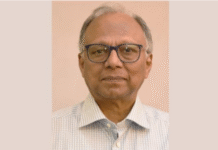M Moneruzzaman
The independence of the lower judiciary still remains on paper as neither a separate secretariat has yet been set up to establish the Supreme Court’s control over the lower judiciary nor any legal instrument has been framed for the appointment of Supreme Court judges.
The government in the past four years has taken no tangible initiative in this regard although the ruling Awami League in its election manifesto pledged that the ‘genuine independence and impartiality of the judiciary will be ensured.’
The manifesto that the Awami League president, Sheikh Hasina, now the prime minister, released on December 12, 2008 before the 2008 general elections also said that the responsibility for controlling and supervising the lower judiciary would be given to the Supreme Court.
Legal experts said that the lower judiciary would not be independent of the executive until the secretariat was established.
In the absence of the secretariat, the transfer, promotion and posting of judges are now carried out by the government although in consultation with the Supreme Court, they said.
The government has also kept missing deadlines the Supreme Court set for the implementation of its 12-point directives the court issued on December 2, 1999 in their entirety although the judicial magistracy was made ‘independent of the executive branch’ of the state on November 1, 2007 in keeping with the directives.
It has also kept missing deadlines for the implementation of recommendations the Judicial Service Pay Commission made for a separate pay structure for judges.
The Supreme Court registrar, AKM Shamsul Islam, told New Age, ‘The independence of the judiciary remains on paper and the lower judiciary will not come under the full control of the Supreme Court until Article 115 and 116 of the constitution are amended.’
The government enacted the fifteenth amendment to the constitution on June 30, 2011, not heeding an observation the Supreme Court made for the reinstatement of the two original articles as they were on adoption in 1972.
‘We are, however, of the view that… unless Article 115 and 116 are restored to their original position, the independence of the judiciary
will not be fully achieved,’ the Appellate Division observed in its verdict declaring the fifth amendment to the constitution void, citing which the government made the fifteenth amendment.
The verdict also said: ‘It is our earnest hope that Article 115 and 116 of the constitution will be restored to their original position by the parliament as soon as possible.’
The fifteenth amendment, however, had brought about no change to Article 115, which empowers the president absolutely to appointment judges in the lower judiciary.
Article 115 reads: ‘Appointments of persons to offices in the judicial service or as magistrates exercising judicial functions shall be made by the president in accordance with rules made by him in that behalf.’
The original article said, ‘Appointments of persons to offices in the judicial service or as magistrates exercising judicial functions shall be made by the president — (a) in the case of district judges, on the recommendation of the Supreme Court; and (b) in the case of any other person, in accordance with rules made by the president in that behalf after consulting the appropriate public service commission and the Supreme Court.’
Although the fifteenth amendment replaced Article 116 with a new one, the text of the article was changed.
The existing Article 116 says: ‘The control (including the power of posting, promotion and grant of leave) and discipline of persons employed in the judicial service and magistrates exercising judicial functions shall vest in the president and shall be exercised by him in consultation with the Supreme Court.’
The original Article said: ‘The control (including the power of posting, promotion and grant of leave) and discipline of persons employed in the judicial service and magistrates exercising judicial functions shall vest in the Supreme Court.’
No initiative has yet been taken to frame a set of rules for the appointment of Supreme Court judges, causing frequent controversies over their appointments that have continued for long.
Supreme Court lawyer Shahdeen Malik, also director of the law faculty at the BRAC University, told New Age, ‘The influence of the executive branch on the lower judiciary continues as the full control of the Supreme Court over the appointment, posting, transfer and promotion of lower court judges is yet to be established.’
Although the appointment, promotion and posting of lower court judges are made in consultation with the Supreme Court, in practice, the law ministry proposes the promotion, transfer and posting and then the chief justice is consulted by the law ministry and the president finally issues the orders, said retired district judge Ikteder Ahmed, who was the Supreme Court registrar on November 1, 2007.
Source: New Age BD









